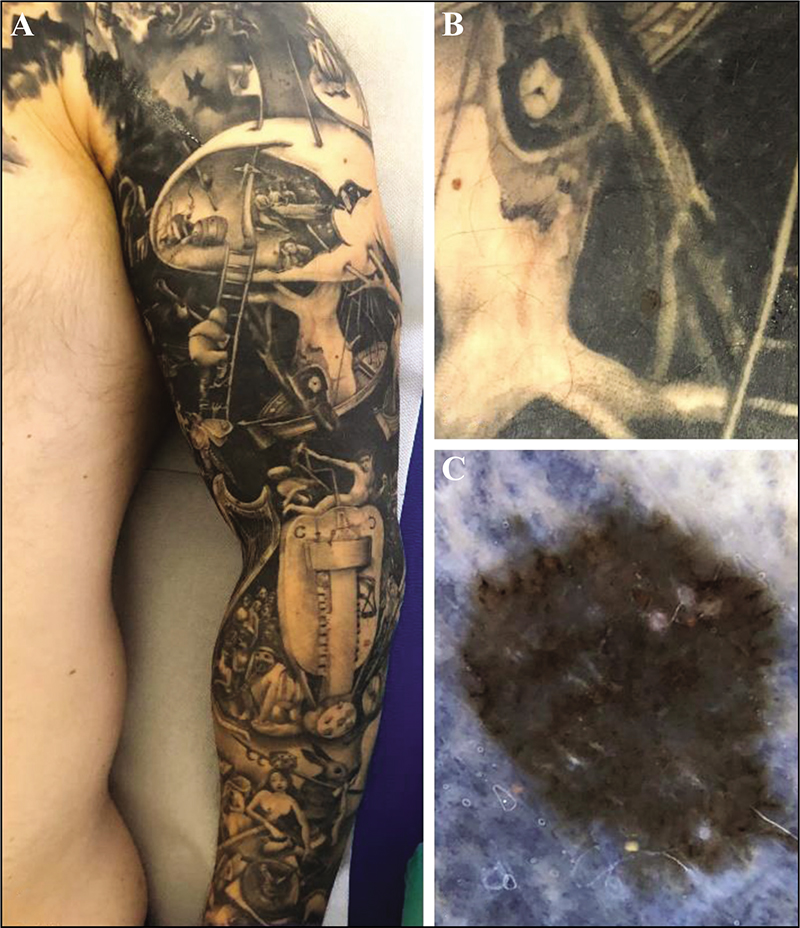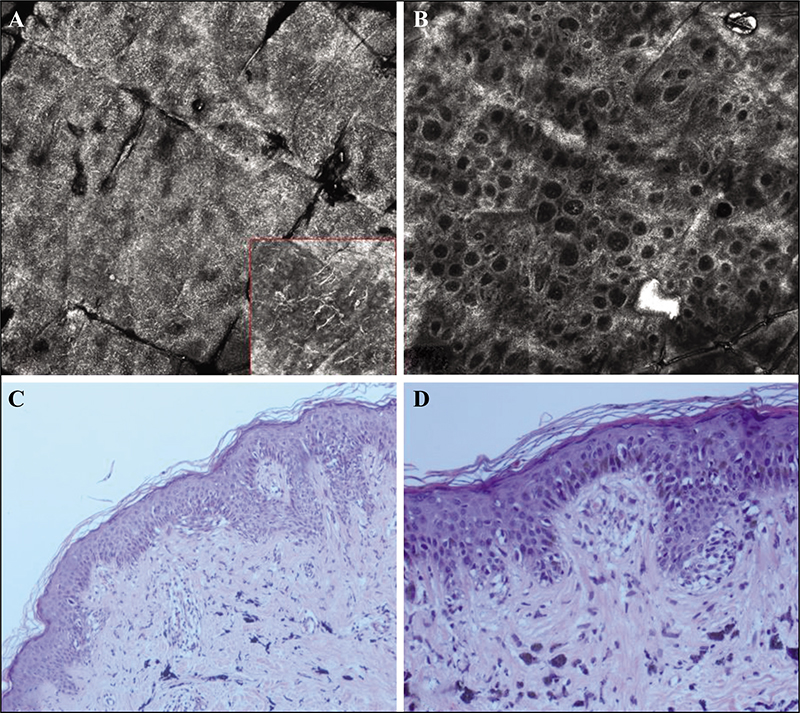European Journal of Dermatology
MENUMelanoma on tattoos: a case study and review of the literature Volume 32, issue 6, November-December 2022
- Key words: ink, melanoma, pigmentation, prevention, skin cancer, tattoo
- DOI : 10.1684/ejd.2022.4353
- Page(s) : 703-8
- Published in: 2022
Background
Decorative tattooing is a very widespread and constantly increasing practice, especially among young people.
Objectives
Here, we report a case study of melanoma occurring on a tattoo on the left arm and provide an overview of all cases reported so far.
Materials & Methods
A systematic literature search of publications was conducted from inception to September 2021 via Medline (PubMed), Scopus and Google Scholar, in order to identify all cases of primitive melanomas arising on tattoos.
Results
In total, 35 cases (32 males, three females) of melanoma arising on tattoos on skin were identified. Interestingly, most melanomas occurred on dark blue (10/35), black (12/35) or blue tattoos (3/35).
Conclusion
Due to the low number of melanoma cases arising on tattoos, it is not possible to confirm whether tattoos play a cancerogenic role. However, tattooing may make it more difficult to detect and monitor pigmented lesions, potentially delaying the diagnosis of cutaneous malignancies. Patients at high risk of melanoma should be warned about the risks associated with such procedures



